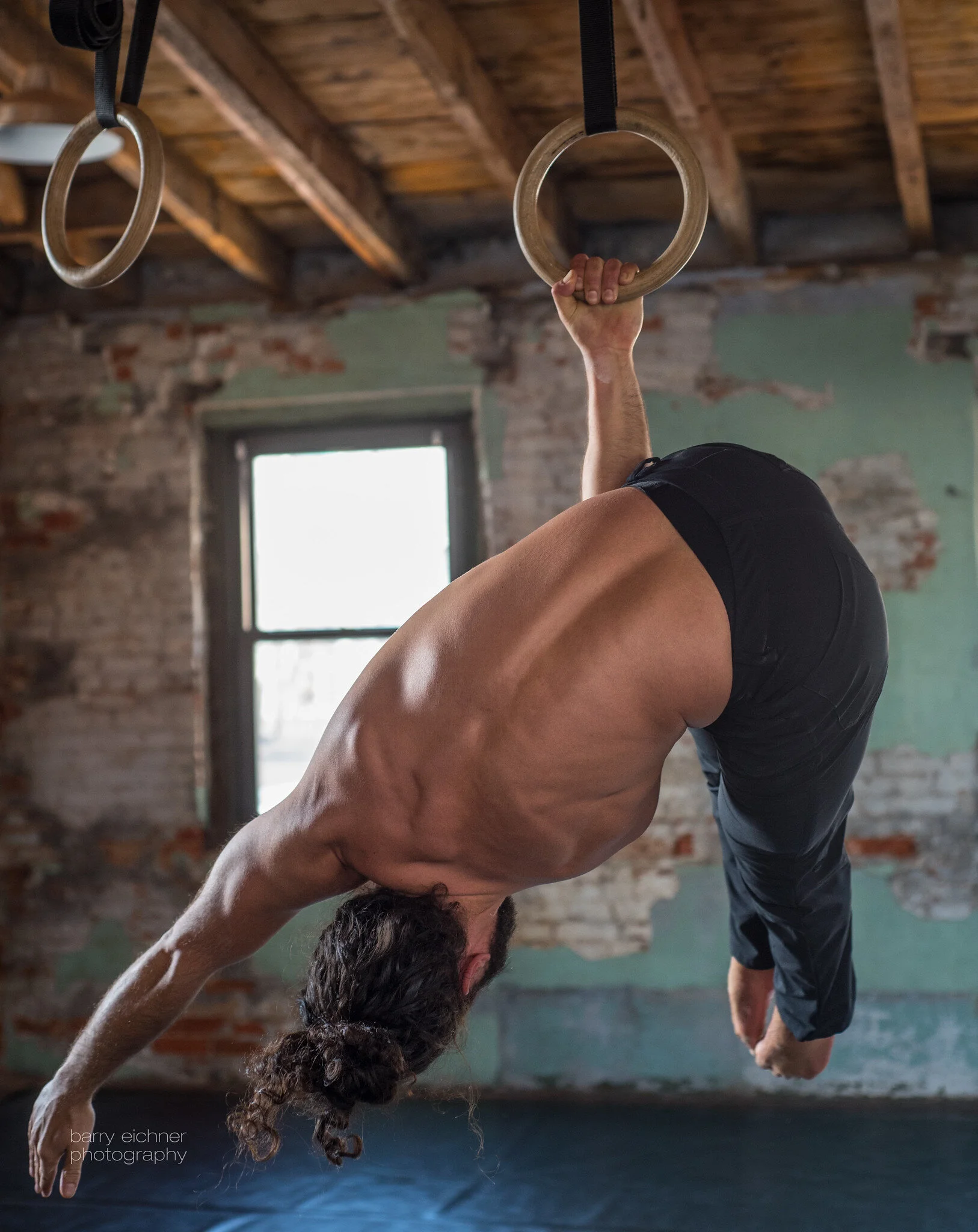An essential and often overlooked movement pattern in our modern world, hanging is something I prefer to implement as soon as possible with most students. For students that feel intimidated by this prospect but with adequate shoulder flexion* to reach the bar I encourage you to start with grasping the bar and keeping both feel grounded so as to limit the amount of load demanded by the shoulders.
*If you do not have the shoulder flexion to reach the bar, watch the shoulder routine below and think about incorporating relevant exercises into your mobility routine
-
We will start with two variations, active and passive hangs.
The active hang will be a safer start for beginners as it puts less stress on tendons ligaments and connective tissue, while using one’s muscular ability to support the added load.
-
Passive hangs are the favored variation of young children who tend to have more tendon and ligament strength while lacking the muscular strength. As adults, our goal is to be capable accessing both of these types of strength and thus once the passive hang is accessible you will alternate between the two types of hangs generally with a 2:1 ratio (10 seconds of active hang, coupled with 5 seconds of passive hanging)
-
Active Hang:
Shoulders are completely depressed (drawing down the back, away from ears) - look externally rotate the shoulders (as if you could get the armpits to face more forward/into each other
Passive Hang:
Allowing shoulders to relax and naturally elevate
-
Hanging might be grouped with several other activities pending many factors.
-For beginners you might keep the feet on the ground for some or all of the time (note the last 20 seconds of the video below) and it may be most relevant for this to be a climax of strength and conditioning. See the plank blog and consider substituting the plank on alternate days with hanging variations for 15-60 seconds (pending level of ability)
-For intermediate practitioners it will group well with a General Mobility warm up, serving to prepare the shoulders for more complex movements and decompressing the spine, creating length. Work on holding 2-4 30-60 second hangs, between mobility circles; i.e.., hang for 30 seconds, mobilize neck and shoulders, hang for thirty, spine and hips, etc…)
First Video Demos active and passive hanging
Second various shoulder mobility that will supplement hanging and help with developing fluency for more advanced movements:
with staff: -shoulder dislocates -flexion lifts -shrugs -flexion pulses with elevation -shoulder dislocates -inlocates
With Band -band pull apart -lateral push -lateral punch and pull
Please visit www.Patreon.com/noahmoves to support my ability to continue producing content like this.
